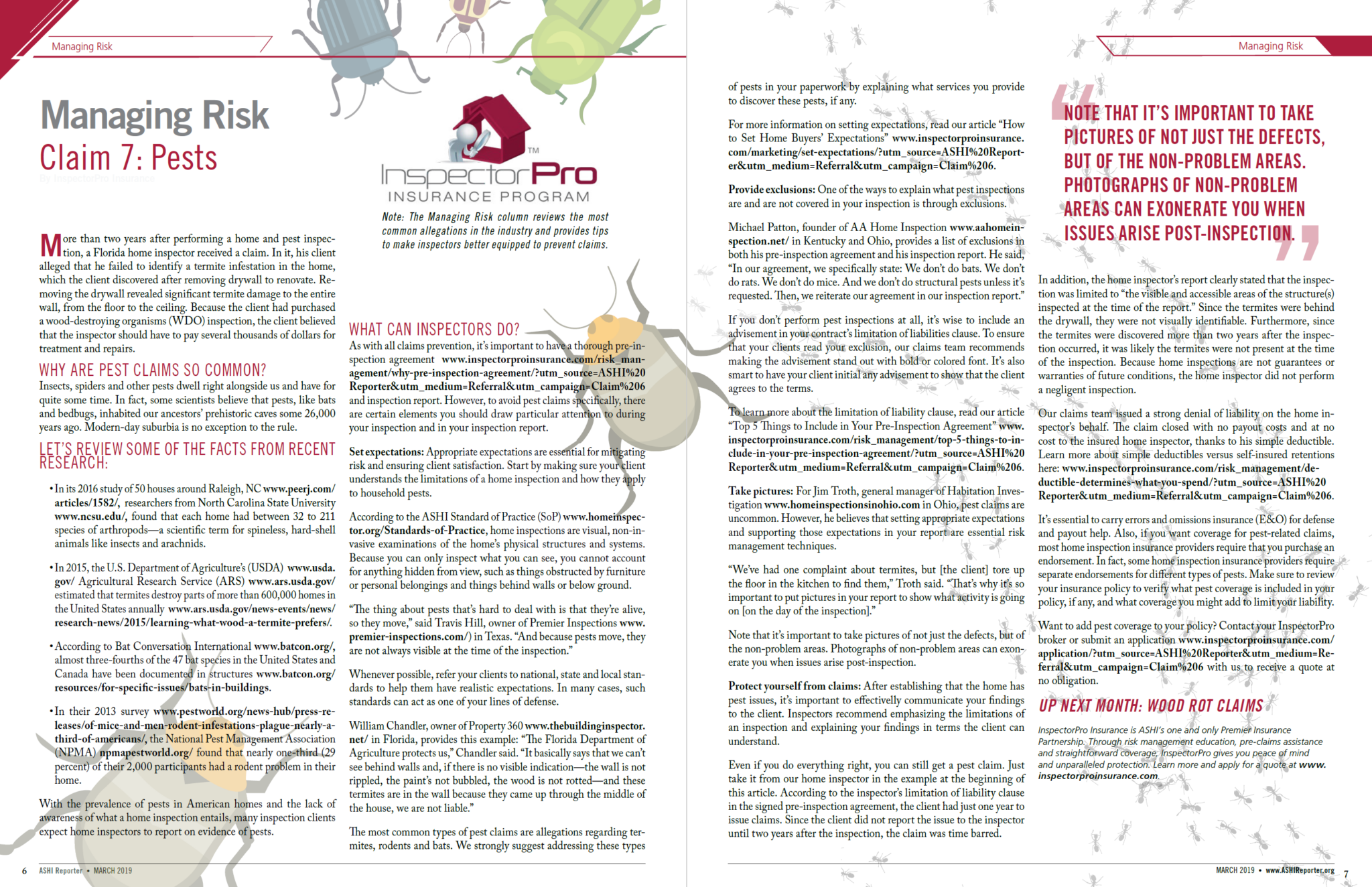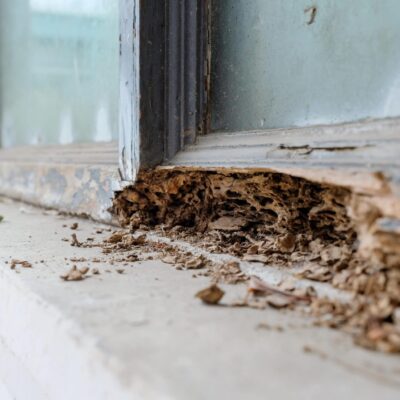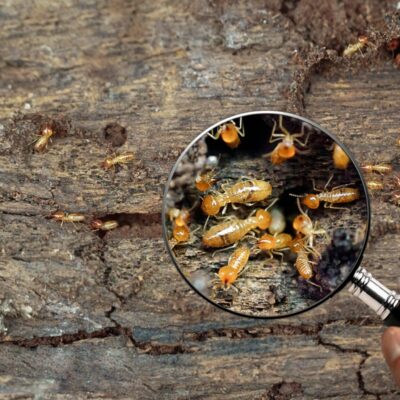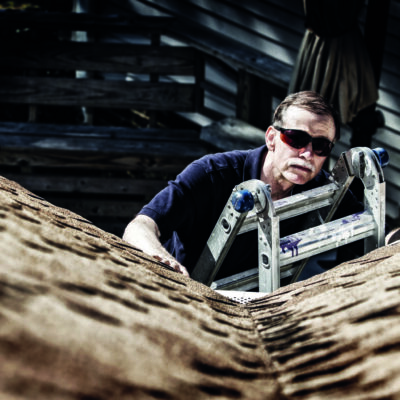Top E&O Claims Claim 7: Pests
Last Updated January 19, 2024
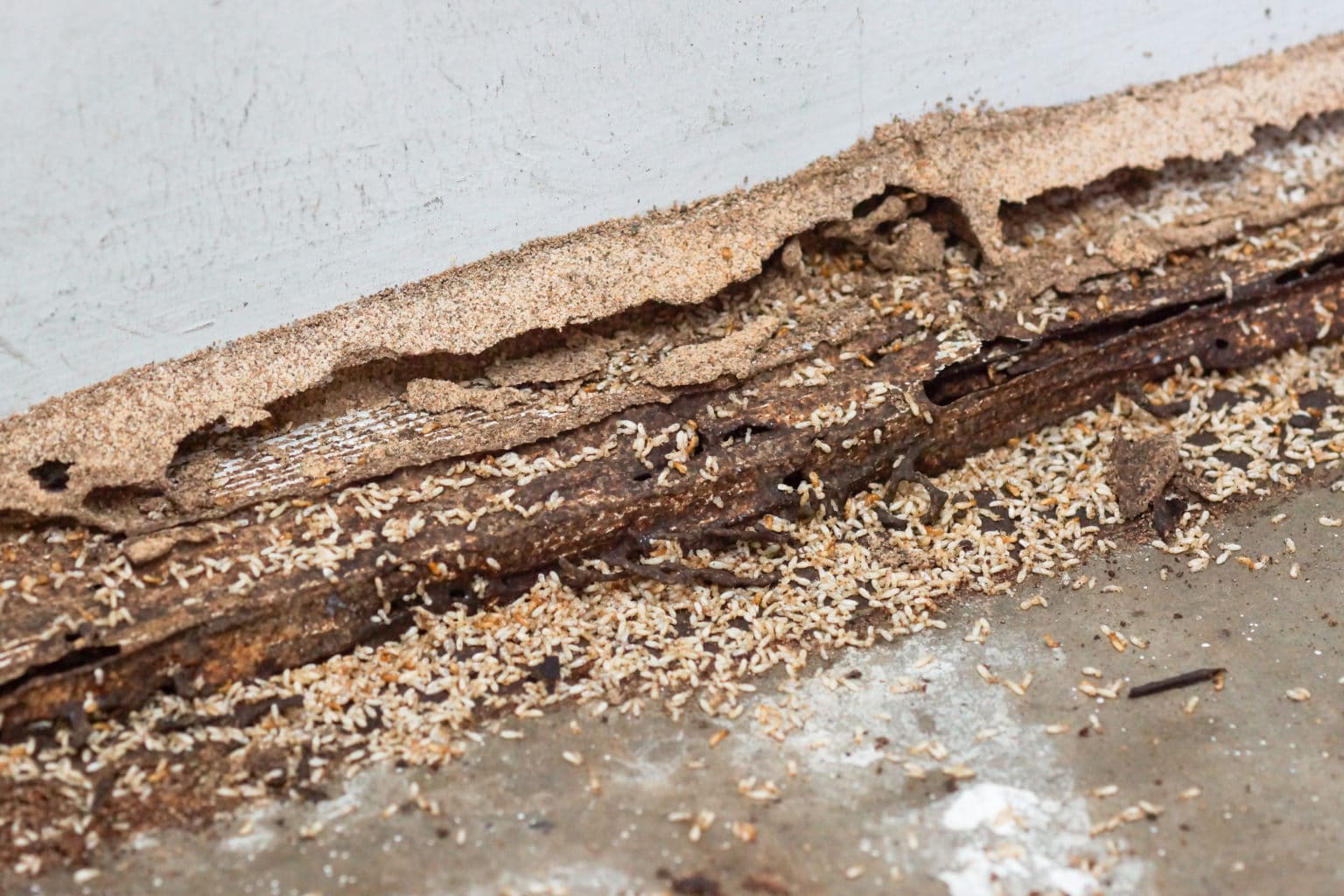
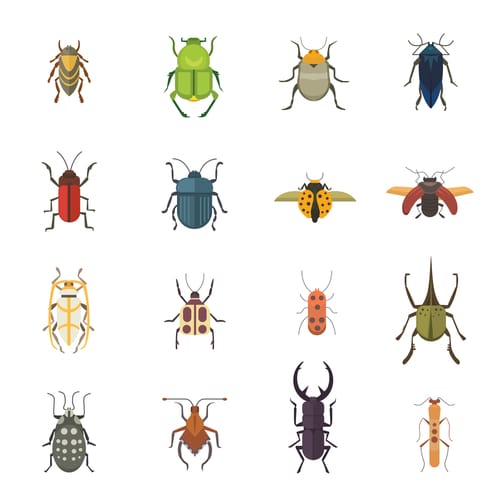 Over two years after performing a home and pest inspection, a Florida home inspector received a claim. In it, his client alleged that he failed to identify a termite infestation in the home, which the client discovered after removing drywall to renovate. Removing the drywall revealed significant termite damage to the entire wall, from the floor to the ceiling. Because the client had purchased a wood-destroying organisms (WDO) inspection, the client believed that the inspector should have to pay several thousands of dollars for treatment and repairs.
Over two years after performing a home and pest inspection, a Florida home inspector received a claim. In it, his client alleged that he failed to identify a termite infestation in the home, which the client discovered after removing drywall to renovate. Removing the drywall revealed significant termite damage to the entire wall, from the floor to the ceiling. Because the client had purchased a wood-destroying organisms (WDO) inspection, the client believed that the inspector should have to pay several thousands of dollars for treatment and repairs.
Why are pest inspection claims so common?
Insects, spiders and other pests dwell right alongside us and have for quite some time. In fact, some scientists believe that pests like bats and bedbugs inhabited our ancestors’ prehistoric caves some 26,000 years ago.
Modern-day suburbia is no exception to the rule. Let’s review some of the facts from recent research:
- In its 2016 study of 50 houses around Raleigh, NC), researchers from North Carolina State University found that each home had between 32 to 211 species of arthropods—a scientific term for spineless, hard-shell animals like insects and arachnids.
- In 2015, the US Department of Agriculture’s (USDA) Agricultural Research Service (ARS) estimated that termites destroy parts of more than 600,000 homes in the United States annually.
- According to Bat Conversation International, almost three-fourths of the 47 bat species in the United States and Canada have been documented in structures.
- In their 2013 survey, the National Pest Management Association (NPMA) found that nearly one-third (29 percent) of their 2,000 participants had a rodent problem in their home.
With the prevalence of pests in American homes and the lack of awareness of what a home inspection entails, many inspection clients expect home inspectors to report on evidence of pests.
What can inspectors do?
As with all claims prevention, it’s important to have a thorough pre-inspection agreement and inspection report. However, to avoid pest claims specifically, there are certain elements you should draw particular attention to during your inspection and in your inspection report.
Set expectations.
Appropriate expectations are essential for mitigating risk and ensuring client satisfaction. Start by making sure your client understands the limitations of a home inspection and how they apply to household pests.
According to the ASHI Standard of Practice (SoP), home inspections are visual, non-invasive examinations of the home’s physical structures and systems. Because you can only inspect what you can see, you cannot account for anything hidden from view, such as things obstructed by furniture or personal belongings and things behind walls or below ground.
“The thing about pests that’s hard to deal with is that they’re alive, so they move,” said Travis Hill, owner of Premier Inspections in Texas. “And because pests move, they are not always visible at the time of the inspection.”
Whenever possible, refer your clients to national, state and local standards to help them have realistic expectations. In many cases, such standards can act as one of your lines of defense.
William Chandler, owner of Property 360 in Florida, provides this example: “The Florida Department of Agriculture protects us,” Chandler said. “It basically says that we can’t see behind walls and, if there is no visible indication—the wall is not rippled, the paint’s not bubbled, the wood is not rotted—and these termites are in the wall because they came up through the middle of the house, we are not liable.”
The most common types of pest claims are allegations regarding termites, rodents and bats. We strongly suggest addressing these types of pests in your paperwork by explaining what services you provide to discover these pests, if any.
For more information on setting expectations, read our article, “How to Set Home Buyers’ Expectations.”
Provide exclusions.
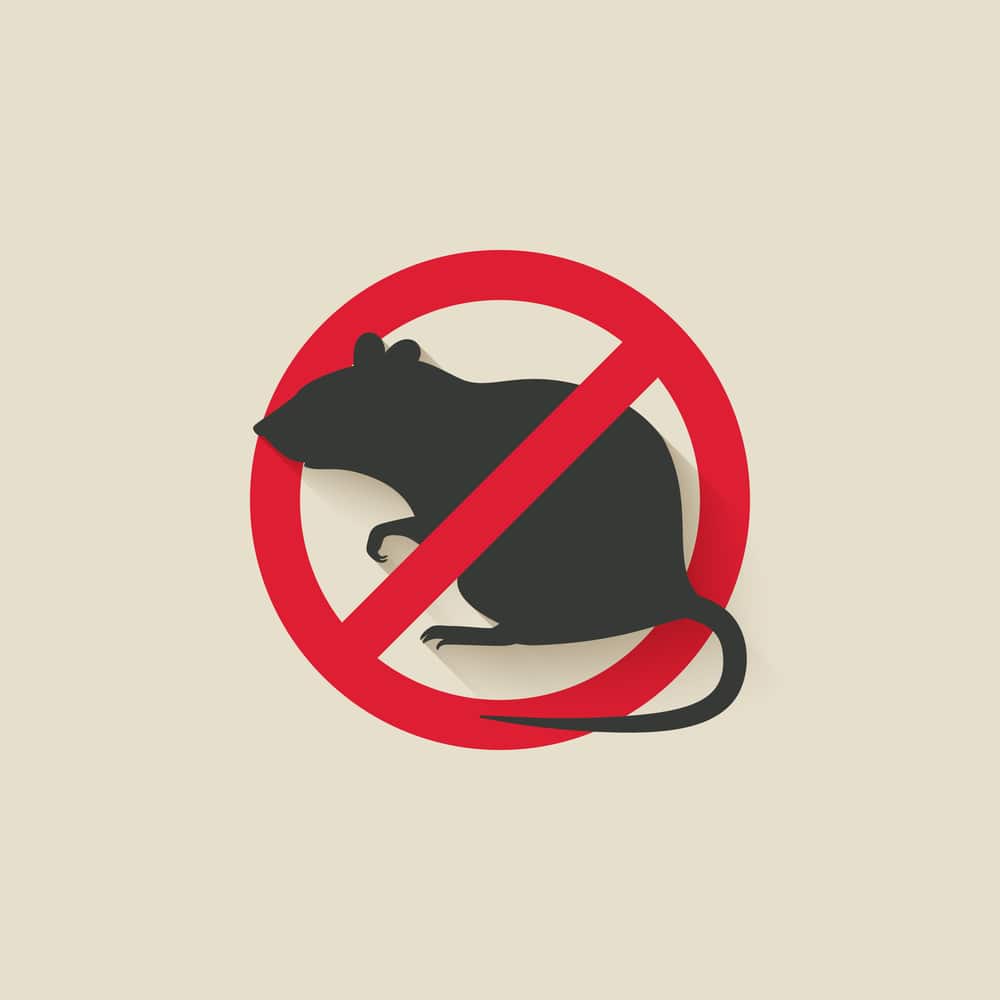 One of the ways to explain what pest inspections are and are not covered in your inspection is through exclusions.
One of the ways to explain what pest inspections are and are not covered in your inspection is through exclusions.
Michael Patton, founder of AA Home Inspection in Kentucky and Ohio, provides a list of exclusions in both his pre-inspection agreement and his inspection report. He said, “In our agreement, we specifically state: We don’t do bats. We don’t do rats. We don’t do mice. And we don’t do structural pests unless it’s requested. Then, we reiterate our agreement in our inspection report.”
If you don’t perform pest inspections at all, it’s wise to include an advisement in your contract’s limitation of liabilities clause. To ensure that your clients read your exclusion, our claims team recommends making the advisement stand out with bold or colored font. It’s also smart to have your client initial any advisement to show that the client agrees to the terms.
To learn more about the limitation of liability clause, read our article, “Top 5 Things to Include in Your Pre-Inspection Agreement.”
Take pictures.
For Jim Troth, general manager of Habitation Investigation in Ohio, pest claims are uncommon. However, he believes that setting appropriate expectations and supporting those expectations in your report are essential risk management techniques.
“We’ve had one complaint about termites, but [the client] tore up the floor in the kitchen to find them,” Troth said. “That’s why it’s so important to put pictures in your report to show what activity is going on [on the day of the inspection].”
Note that it’s important to take pictures of not just the defects but of the non-problem areas. Photographs of non-problem areas can exonerate you when issues arise post-inspection.
The Resolution
After establishing that the home has pest issues, it’s important to communicate your findings to the client well. Inspectors recommend emphasizing the limitations of an inspection and explaining your findings in terms the client can understand.
Even if you do everything right, you can still get a pest claim. Just take it from our home inspector in the example at the beginning of this article. According to the limitation of liability in the signed pre-inspection agreement, the client had a year to issue claims. Since the client didn’t report the issue to the inspector until two years post inspection, the claim was time barred.
In addition, the home inspector’s report clearly stated that the inspection was limited to “the visible and accessible areas of the structure(s) inspected at the time of the report.” Since the termites were behind the drywall, they were not visually identifiable. Furthermore, the termites were discovered over two years after the inspection occurred. Thus, it was likely the termites were not present at the time of the inspection. Because home inspections are not guarantees or warranties of future conditions, the home inspector did not perform a negligent inspection.
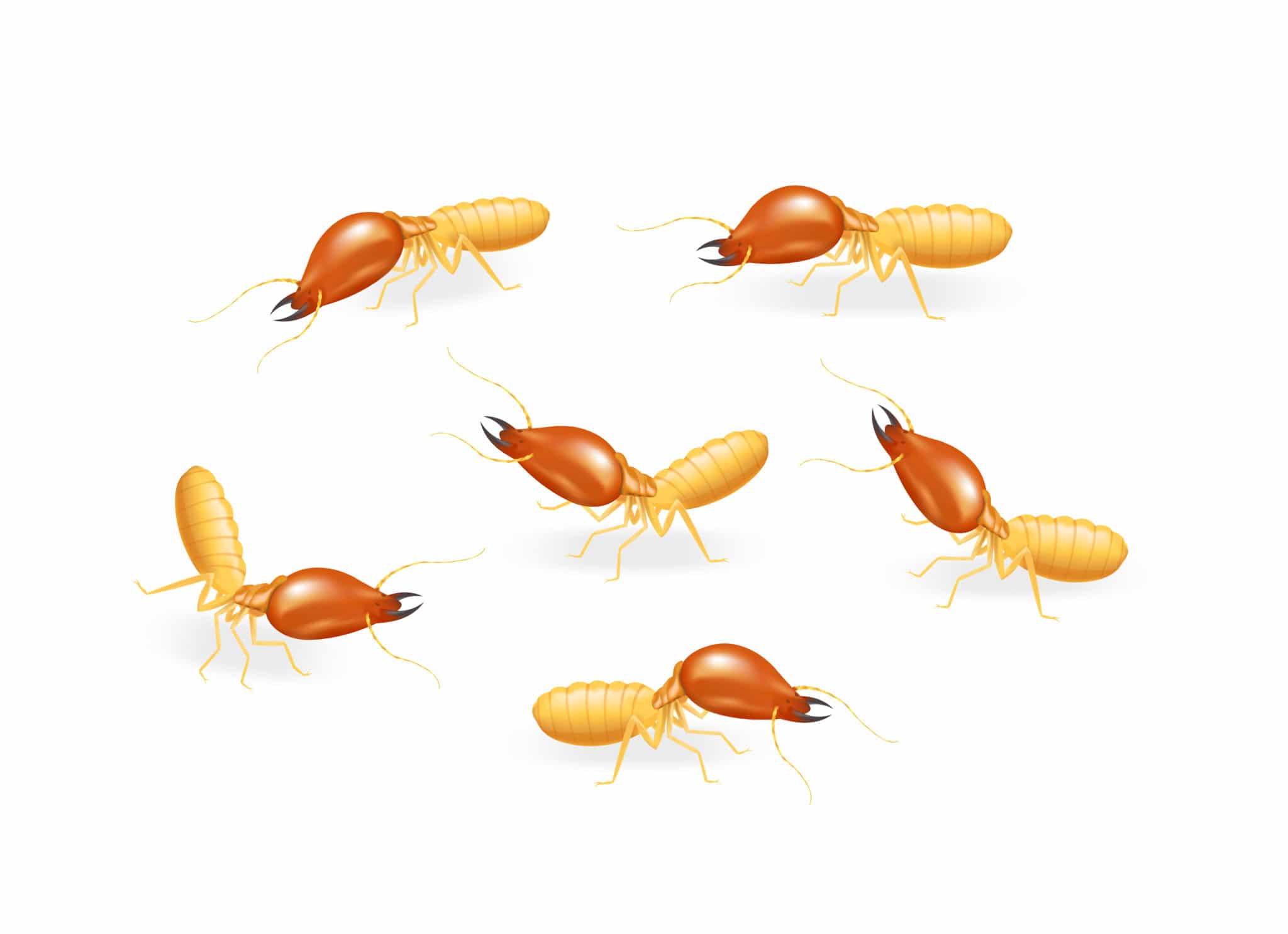 Our claims team issued a strong denial of liability on the home inspector’s behalf. The claim closed without payout costs and nor cost to the insured home inspector, thanks to his simple deductible. Learn more about simple deductibles versus self-insured retentions here.
Our claims team issued a strong denial of liability on the home inspector’s behalf. The claim closed without payout costs and nor cost to the insured home inspector, thanks to his simple deductible. Learn more about simple deductibles versus self-insured retentions here.
Protect yourself from claims.
It’s essential for home inspectors to carry errors and omissions insurance (E&O) for defense and payout help. Also, if you want coverage for pest-related claims, most home inspection insurance providers require that you purchase an endorsement. In fact, some home inspection insurance providers require separate endorsements for different types of pests. Review your insurance policy to verify what pest coverage is included, if any. You may want to add coverage to limit your liability.
Want to add pest coverage to your policy? Contact your InspectorPro broker or submit an application with us to receive a home inspection insurance quote at no obligation.
This article was published in the ASHI Reporter in March 2019. See how this story appears in print below.


